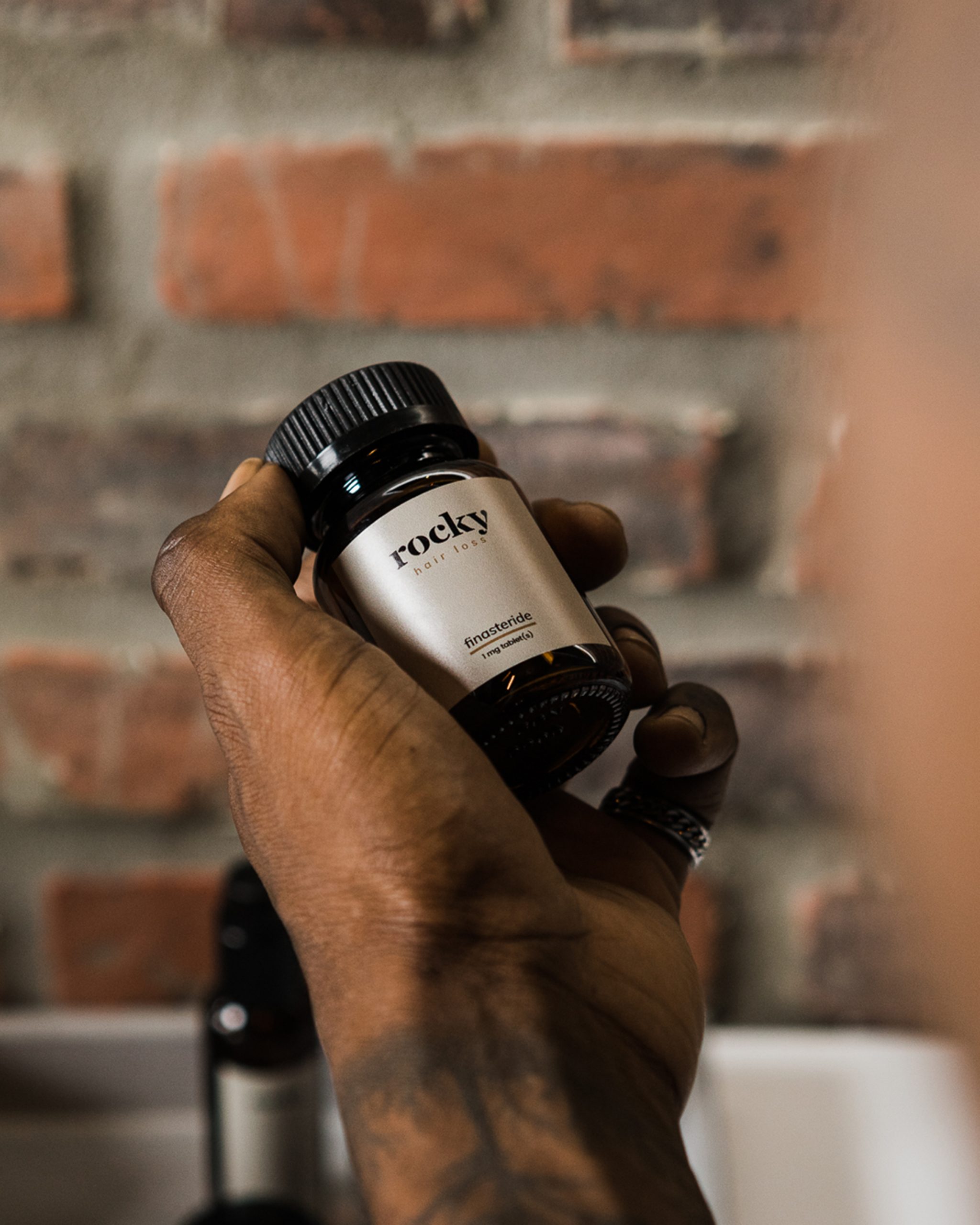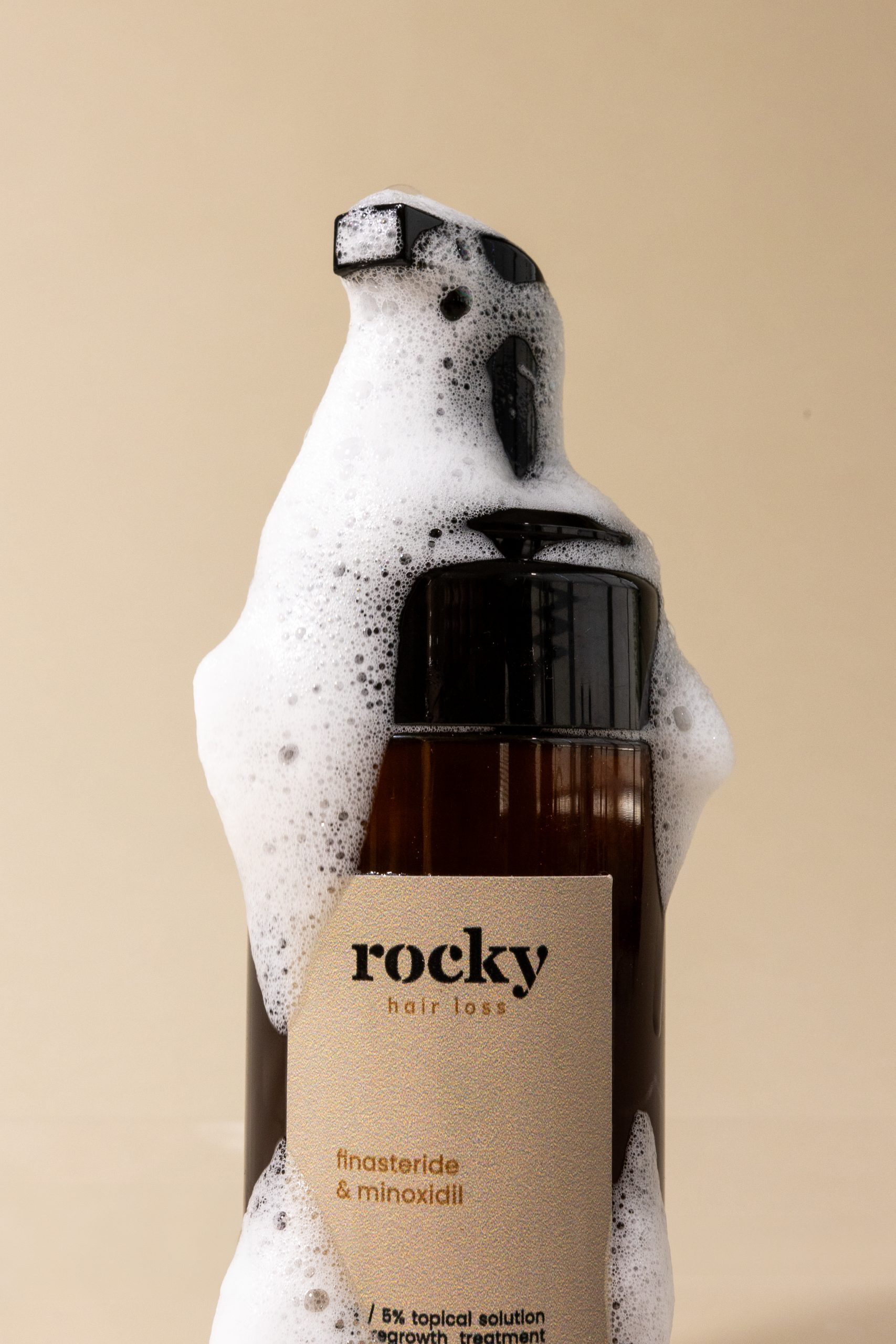Introduction: Hair Loss in Canadian Men
If you’re noticing thinning hair, a receding hairline, or bald spots, you’re not alone. Male pattern baldness (androgenetic alopecia)[1] affects a significant number of Canadian men, often beginning as early as their 20s or 30s. In fact, according to the Canadian Dermatology Association, male pattern baldness affects about 50 per cent of men[2].
The good news? Effective hair loss treatments in Canada exist to help slow, stop, or even reverse the process. From over-the-counter options like Minoxidil foam to prescription medications such as Finasteride (Propecia® tablets), men now have proven solutions available.
This guide covers what causes hair loss, the most effective treatment products in Canada, how to choose the right option, and how to get medication discreetly online.
What Causes Hair Loss in Men?
Most hair loss in men is due to genetics, but other factors can play a role. Common causes include:
- Genetics (androgenetic alopecia): The leading cause of male pattern baldness, passed down through family history.
- Hormones: Dihydrotestosterone (DHT), a byproduct of testosterone, shrinks hair follicles over time.
- Medical conditions: Scalp infections or autoimmune conditions can accelerate loss.
- Lifestyle factors: High stress, poor nutrition, and smoking may worsen thinning.
For the majority of men, genetics and DHT are the main drivers. That’s why treatments like Finasteride and Minoxidil, which target these pathways, are first-line options.
Over-the-Counter Hair Loss Treatments in Canada
Minoxidil for Hair Growth

What it is: A topical solution or foam available without a prescription. Commonly sold as Rogaine®.
How it works: Improves blood flow to hair follicles, prolonging the growth phase of the hair cycle.
How to use it: Apply directly to the scalp once or twice daily.
Results: Noticeable improvement typically appears after 3–6 months, with best results seen at 6–12 months of consistent use.
Best for: Men in the early stages of thinning hair or receding hairlines.
Prescription Hair Loss Treatments for Men in Canada
Finasteride for Hair Growth (Propecia® Tablets)

What it is: An oral prescription medication available in Canada.
How it works: Blocks the conversion of testosterone to DHT, the hormone that causes follicles to shrink.
Who it’s for: Men with male pattern baldness.
Effectiveness: Clinical studies show most men stop losing hair, and many experience regrowth within 6–12 months of consistent use.
Risks: Possible side effects include reduced libido or erectile dysfunction, though these are uncommon.
Curious about which hair loss treatment is right for you? Take our online assessment today.
How to Choose the Right Hair Loss Treatment
When it comes to choosing the right hair loss treatment for male pattern baldness, Finasteride is the gold standard because it treats the root cause of hair loss, DHT[3]. Without controlling DHT, hair loss will continue to progress.

Finasteride: Stops or slows hair loss by targeting DHT. It’s essential for long-term success.
Minoxidil: Helps regrow hair by stimulating follicles and improving circulation. It works best when combined with Finasteride.
Rocky Health 2-in-1 Foam: This unique treatment combines Finasteride and Minoxidil in one easy-to-use topical foam. The advantage? You get the benefits of both medications without the need to take oral Finasteride pills, which can help reduce the risk of unwanted systemic side effects.
For most men, the ideal approach is Finasteride to stop further loss and Minoxidil to regrow hair. Rocky Health’s 2-in-1 foam makes this process simpler, more discreet, and potentially safer.
How to Get Hair Loss Medication Discreetly in Canada
With telehealth platforms like Rocky Health, you can avoid in-person appointments and get hair loss medication discreetly in Canada. Here’s how it works:
- Fill out an online questionnaire: Share your health history and hair loss goals.
- Meet virtually with a licensed clinician: Chat via phone, or video.
- Receive your prescription: Get prescribed Finasteride, Propecia®, Minoxidil, or Rocky Health’s 2-in-1 foam, if eligible.
- Get discreet delivery: Receive your medications, which are shipped directly to your home within a few days.
- Ongoing support: Get refills, dose adjustments, and check-ins with your clinician.
Telehealth platforms ensure you can begin hair loss treatment quickly and privately from the comfort of your own home.
Preventing Further Hair Loss
While genetics play the biggest role, you can help slow hair loss by:
-
- Eating a nutrient-rich diet with plenty of protein, iron and supplements.
- Reducing stress through exercise or mindfulness.
- Avoiding smoking, which restricts blood flow to the scalp.
- Using gentle shampoos and avoiding harsh chemical treatments.
Hair Loss Treatment Comparison Table
| Treatment / Product | Type | How It’s Taken | Approved Use in Canada | Best For | Common Side Effects |
|---|---|---|---|---|---|
| Minoxidil (Rogaine®) | Topical foam/solution | Applied daily to scalp | Male pattern baldness | Men who want to regrow hair | Scalp irritation |
| Finasteride (Propecia®) | Oral tablet | Daily | Male pattern baldness | Men who want to prevent or stop hair loss | Low libido (rare) |
| Rocky’s 2-in-1 Foam | Topical foam (Finasteride + Minoxidil) | Applied daily to scalp | Male pattern baldness | Men who want both regrowth and prevention in one treatment, without oral pills | Mild scalp irritation |
Conclusion: Hair Loss Is Common, But It Doesn’t Have to Be Permanent
Hair loss is common among Canadian men, but it doesn’t have to be permanent. With proven treatments like Minoxidil foam, Finasteride tablets (Propecia®), and innovative solutions like Rocky Health’s 2-in-1 foam, you can slow or even reverse thinning.
The most important step? Starting early. The sooner you begin treatment, the better your chances of maintaining and regrowing hair.
If you’re ready to explore your options, start an online consultation with Rocky Health and get connected with a licensed healthcare practitioner today.
Resources
- Asfour, Leila, et al. “Male Androgenetic Alopecia.” Endotext, edited by Kenneth R. Feingold et al., MDText.com, Inc., 25 Jan. 2023.
- “Alopecia.” Canadian Dermatology Association, Canadian Dermatology Association, 2025.
- Kaufman, K. D. “Clinical studies on Finasteride in the treatment of male pattern hair loss.” Journal of Investigative Dermatology Symposium Proceedings, 2002.
Disclaimer: This article is intended for informational purposes only and is not a substitute for professional medical advice, diagnosis, or treatment. Always consult your healthcare provider with any questions about a medical condition or treatment.
Editorial Standards: At Rocky Health, we’ve made it our mission to support men and women with trustworthy, easy-to-understand medical and health information online.
Read more about our editorial standards here.



